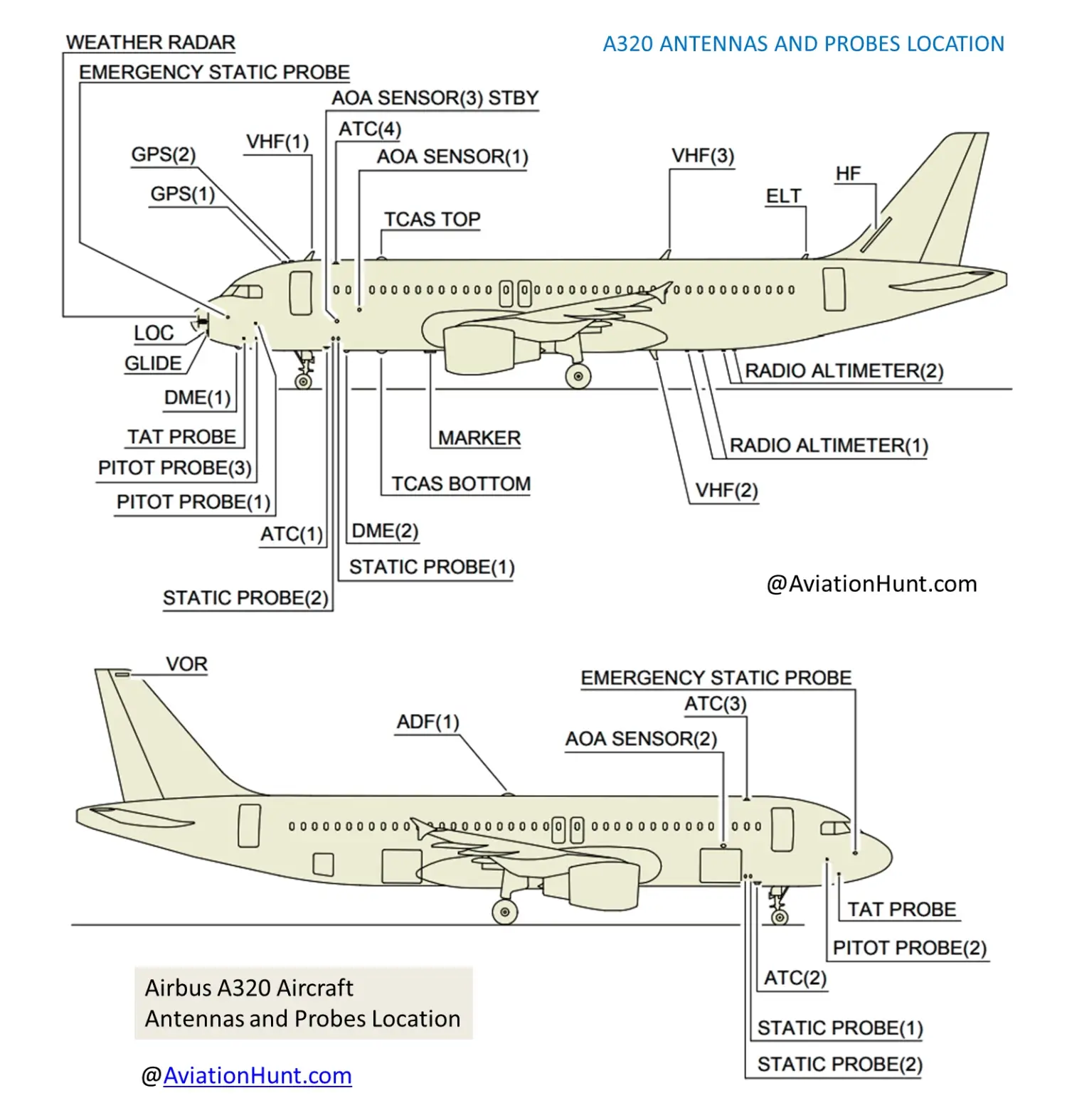Aircraft Antennas and Probes Location


Aircraft Antennas and Probes
- WEATHER RADAR – The WXR antenna sends the RF pulses and receives the RF returns. The receiver/transmitter (R/T) gets air data inertial reference unit (ADIRU) pitch and roll data for antenna stabilization.
- AOA SENSOR – The AOA sensor provides Angle of Attack by sensing the direction of local airflow.
- GPS – The GPS antennas receive L-band frequency signals (1575.42 MHz) and sends them to the multi mode receivers (MMR).
- VHF – The VHF antenna receives and transmits RF signals in the VHF frequency range.
- HF – The HF antenna receives an RF signal from the antenna coupler and transmits the RF signal to other airplane and ground HF communication systems. The antenna also receives incoming RF signals and sends the RF signals to the antenna coupler.
- TCAS – The TCAS directional antennas receive traffic airplane reply signals. They also transmit the TCAS interrogation signals.
- ATC – The two antennas transmit signals from the ATC transponder and send received signals to the ATC transponder. TheATC transponders interface with the TCAS system.
- GPS – The GPS antennas are on the top of the fuselage. GPS sensor units are in the multi mode receivers (MMR).
- PITOT PROBE – The pitot probe measures pitot air pressure.
- STATIC PROBE – The static ports measure static (ambient) air pressure.
- EMERGENCY STATIC PROBE – The emergency static ports measure static (ambient) air pressure for use in emergency.
- TAT PROBE – TAT probe measures the temperature of airflow through the sensor.
- LOC – The Localizer is a component of ILS that provides lateral guidance to the pilot during the approach.
- GLIDE – The glide slope is a component of ILS that provides vertical guidance to the pilot during the approach.
- MARKER – The marker beacon antenna receives signals from marker beacon ground stations.
- ELT – The emergency locator transmitter (ELT) antenna sends radio signals in the very high frequency (VHF) and ultra high frequency (UHF) ranges. The emergency locator transmitter (ELT) antenna transmits 406 Mhz, 121.5 Mhz, and 243 Mhz signals.
- RADIO ALTIMETER – The RA antennas are usually on the bottom of the fuselage. The transmit antenna sends radio frequency (RF) signals to the ground. The receive antenna sends reflected RF signals to the receiver circuits of the RA receiver/transmitter.
- DME – The DME antennas transmit and receive DME signals. The antennas transmit signals to the ground stations. They then receive the reply signals from the DME ground station and send them to the interrogator.
- VOR – The VOR antenna receives RF signals in the frequency range of 108 MHz to 117.95 MHz. The antenna receives VOR and localizer frequencies. The VOR/LOC antenna sends VOR signals to both VOR/MB receivers.
- ADF – The ADF antenna receives electromagnetic signals from ground stations. The sense antenna receives the electrical part of the signal. The loop antenna receives the magnetic part of the ground station signal.
- SATCOM – for satellite communication.
Location of Antennas, Probes, Sensors and Exterior Lights in Airbus A320
Disclaimer – for educational purposes only
